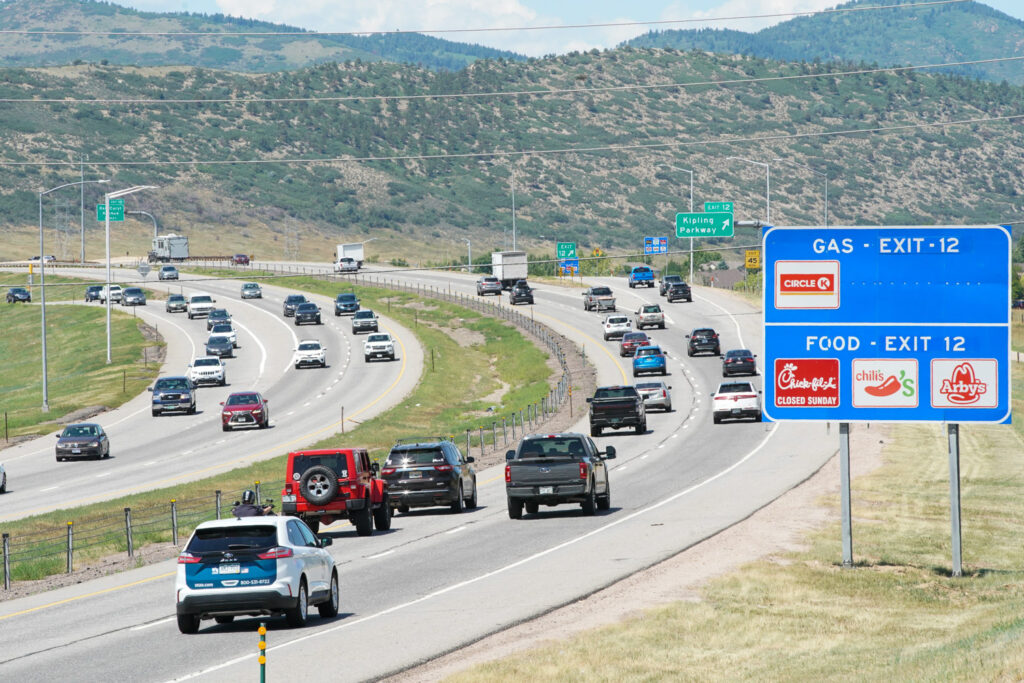For anyone familiar with Colorado’s I-70 Westbound, it’s no secret that this highway offers a mix of unforgettable scenery and significant challenges. Connecting Colorado’s bustling cities with its world-renowned mountain destinations, this stretch of highway serves as a critical lifeline for travelers and commuters.
But with its high-altitude terrain, unpredictable weather, and seasonal floods of traffic, the road requires careful planning. Enter the Colorado Department of Transportation’s (CDOT) camera system, an innovative tool that equips drivers with the real-time information they need to make better decisions on the road.
By utilizing CDOT cameras, travelers can anticipate potential roadblocks, avoid hazardous situations, and plan their journeys with far greater confidence. But how does this system work? And how is it helping to revolutionize travel in Colorado? Here’s everything you need to know to make your I-70 Westbound travel easier and safer.

Picture this: you’re en route to the ski slopes with fresh snow waiting for you, or perhaps heading west for a summer hike amidst Colorado’s Rocky Mountains. Suddenly, you hit bumper-to-bumper traffic, or worse, a snowstorm has made certain sections of the highway treacherous. For many travelers, this is a familiar scenario where minutes can feel like hours, and plans can quickly unravel. This is where CDOT’s traffic cameras play a crucial role.
CDOT’s cameras allow drivers to see a live view of the highway—from congested areas to snow-packed roads and beyond. Whether you’re planning to pass through notorious stretches like Floyd Hill, Eisenhower/Johnson Memorial Tunnels, or Vail Pass, these cameras offer real-time insights into road conditions. That snowstorm brewing in the mountains? You’ll see it ahead of time. Traffic building up around a major exit? It’s flagged for you in advance.
By bridging the gap between guesswork and actionable information, these updates can empower you to delay departure, choose alternate routes, or come prepared with the right gear and mindset. This not only saves time but enhances safety by helping you stay ahead of disruptive conditions. On I-70, where mountain weather can shift in an instant, having this level of preparedness can make all the difference.
Accessing CDOT’s traffic cameras is not just convenient—it’s designed with simplicity in mind. The Colorado Department of Transportation offers a user-friendly platform accessible from its website or mobile app, providing travelers with an intuitive interface to receive real-time updates.
Once logged into the platform, a driver can browse camera feed locations covering key segments of I-70 Westbound. Mile markers, interchanges, and mountain passes are all represented through strategically placed cameras to provide comprehensive coverage. Whether you’re starting from Denver or traveling further west toward Glenwood Springs, every major stretch is monitored and visible.
The CDOT mobile app streamlines this process even further. For those navigating on-the-go, checking live camera feeds is quick and efficient. You can zoom into the specific area you’re heading toward, check for incidents, and determine whether conditions ahead remain favorable.
Additionally, the platform integrates weather conditions alongside live footage. This added layer of information helps travelers further understand what they’re looking at in the video feeds. For example, a line of traffic might extend due to slick roads or an icy commute—details you might miss without the context provided by these feeds.
The CDOT camera system wasn’t always as advanced as it is today. Like many transportation initiatives, it started small. Decades ago, CDOT began with limited stationary cameras strategically placed along critical infrastructure to monitor major intersections and highways. These early systems were rudimentary compared to today’s standards, offering only basic road snapshots to transportation officials.
By the 1990s, with advances in technology becoming more accessible, CDOT significantly expanded its system. Cameras became a vital part of Colorado’s Intelligent Transportation System (ITS), designed to improve travel efficiency and safety across the state. Over the years, additional funding and technological breakthroughs allowed for better camera resolution, wider deployment across interstates like I-70, and the ability to stream real-time footage directly to the public. Today, this system represents a cutting-edge intersection of technology and transportation, providing unparalleled transparency to road users.
What makes CDOT’s camera system truly remarkable is its integration with emerging technology. Modern cameras along I-70 Westbound boast high-resolution feeds, weatherproof durability, and seamless coordination with the state’s traffic management center. Artificial intelligence and automation also play a growing role, analyzing footage for accident detection, calculating traffic patterns, and even predicting where congestion is likely to occur.
Looking toward the future, CDOT envisions integrating its camera system with even smarter solutions. Plans include expanding 5G coverage across major highways to improve the speed and reliability of live feeds, as well as incorporating more tools for drivers. Augmented reality dashboards might allow real-time camera feeds to be projected directly onto vehicle windscreens. Meanwhile, enhanced coordination with emergency services will ensure quicker responses to accidents, closures, and extreme weather.
CDOT also sees its technology as part of a broader effort to support sustainability. By giving drivers tools to plan efficiently, these cameras indirectly reduce fuel consumption. Avoiding standstill traffic lowers emissions and cutbacks on unnecessary idling time, contributing positively to Colorado’s commitments to cleaner air and greener practices.
Regardless of how much CDOT cameras do for you, a few additional travel tips can ensure smoother journeys along this iconic corridor. Begin by checking CDOT’s camera feeds early in your trip planning process. If a significant weather event or traffic closure is detected, try adjusting travel times to avoid peak congestion or working around ongoing closures.
When packing, remember that I-70 often exposes travelers to unpredictable weather patterns—especially in winter months. Items like snow tires, chains, warm clothing, and emergency kits are invaluable. Even in summer, it’s worth keeping essentials like water and snacks on hand since backups and detours can result in extended travel times.
For those planning trips during high-traffic seasons, flexibility is key. Holiday weekends, ski season openings, and summer vacation peaks all coincide with heavier demand on highways. Keeping an eye on the camera feeds and remaining patient can prevent that frustration familiar to anyone who’s experienced prolonged delays on I-70.

The benefits of using CDOT cameras extend far beyond saving time. Most importantly, they make a tangible impact on road safety. From avoiding treacherous conditions to understanding the timing of mountain storms, access to these cameras allows for better-informed decision-making. Safety always wins, and CDOT’s tools help mitigate the risks that Mother Nature and mountain roads can throw your way.
There’s also a more relaxing aspect to these tools. When you know what to expect, stress eases, and your focus remains where it should—on the joy of reaching your destination. Whether you’re heading toward a pristine ski resort, a charming mountain town, or just a stunning drive through Colorado’s peaks, this technology lets you experience the road as part of the adventure itself.
I-70 Westbound represents so much more than a highway—it’s a passage through Colorado’s unrivaled landscapes, equal parts challenging and rewarding. Yet, navigating this route safely and efficiently requires modern solutions. With CDOT cameras at your disposal, you’ll have the tools to stay informed, be prepared, and ensure every mile is part of a seamless, enjoyable journey.
Whether you’re a frequent commuter or a one-time visitor chasing Colorado’s natural beauty, take advantage of these innovations. By harnessing the power of real-time traffic technology combined with smart planning and patience, you can transform your travels on I-70 Westbound into a safe and memorable adventure.
CDOT cameras provide live footage of key sections of I-70 Westbound, helping drivers monitor road conditions, plan routes, and avoid hazards like bad weather or heavy traffic.
You can access CDOT cameras through their website or mobile app, where you’ll find live video feeds and updates for major stretches of I-70.
CDOT cameras improve safety by offering real-time traffic updates, help save time by enabling better route planning, and support eco-friendly travel by reducing unnecessary idling.
No, CDOT cameras are useful year-round. They help drivers plan for weather, observe traffic flow, and monitor conditions regardless of the season.
Check CDOT cameras before starting your trip, pack essentials like water and winter gear, stay flexible with your plans, and monitor road updates regularly for safer and smoother travel.
CDOT cameras are an invaluable tool for anyone traveling on I-70 Westbound, offering real-time updates on traffic and weather conditions. By planning ahead with this technology, drivers can boost safety, save time, and enjoy more stress-free journeys. Whether navigating mountain passes or avoiding congestion, these cameras ensure smarter, more efficient travel. Make CDOT cameras your go-to resource for a seamless adventure through Colorado’s stunning landscapes.
